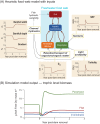Conceptualizing Ecological Responses to Dam Removal: If You Remove It, What's to Come?
- PMID: 30647476
- PMCID: PMC6327834
- DOI: 10.1093/biosci/biy152
Conceptualizing Ecological Responses to Dam Removal: If You Remove It, What's to Come?
Abstract
One of the desired outcomes of dam decommissioning and removal is the recovery of aquatic and riparian ecosystems. To investigate this common objective, we synthesized information from empirical studies and ecological theory into conceptual models that depict key physical and biological links driving ecological responses to removing dams. We define models for three distinct spatial domains: upstream of the former reservoir, within the reservoir, and downstream of the removed dam. Emerging from these models are response trajectories that clarify potential pathways of ecological transitions in each domain. We illustrate that the responses are controlled by multiple causal pathways and feedback loops among physical and biological components of the ecosystem, creating recovery trajectories that are dynamic and nonlinear. In most cases, short-term effects are typically followed by longer-term responses that bring ecosystems to new and frequently predictable ecological condition, which may or may not be similar to what existed prior to impoundment.
Keywords: conceptual models; dam removal; disturbance; ecological modeling; river restoration.
Figures







References
-
- Allen JD, Castillo MM.. 2007. Stream Ecology: Structure and Function of Running Waters, Second Edition Springer.
-
- American Rivers 2018. American Rivers Dam Removal Database. Figureshare. Fileset. 10.6084/m9.figureshare.5234068.v4. - DOI
-
- Anderson JH, Pess GR, Carmichael RW, Ford MJ, Cooney TD, Baldwin CM, McClure MM. 2014. Planning Pacific salmon and steelhead reintroductions aimed at long-term viability and recovery. North American Journal of Fisheries Management 34: 72–93.
-
- Baxter CV, Fausch KD, Saunders WC. 2005. Tangled webs: Reciprocal flows of invertebrate prey link streams and riparian zones. Freshwater Biology 50: 201–220.
-
- Bednarek AT. 2001. Undamming rivers: A review of the ecological impacts of dam removal. Environmental Management 27: 803–814. - PubMed

